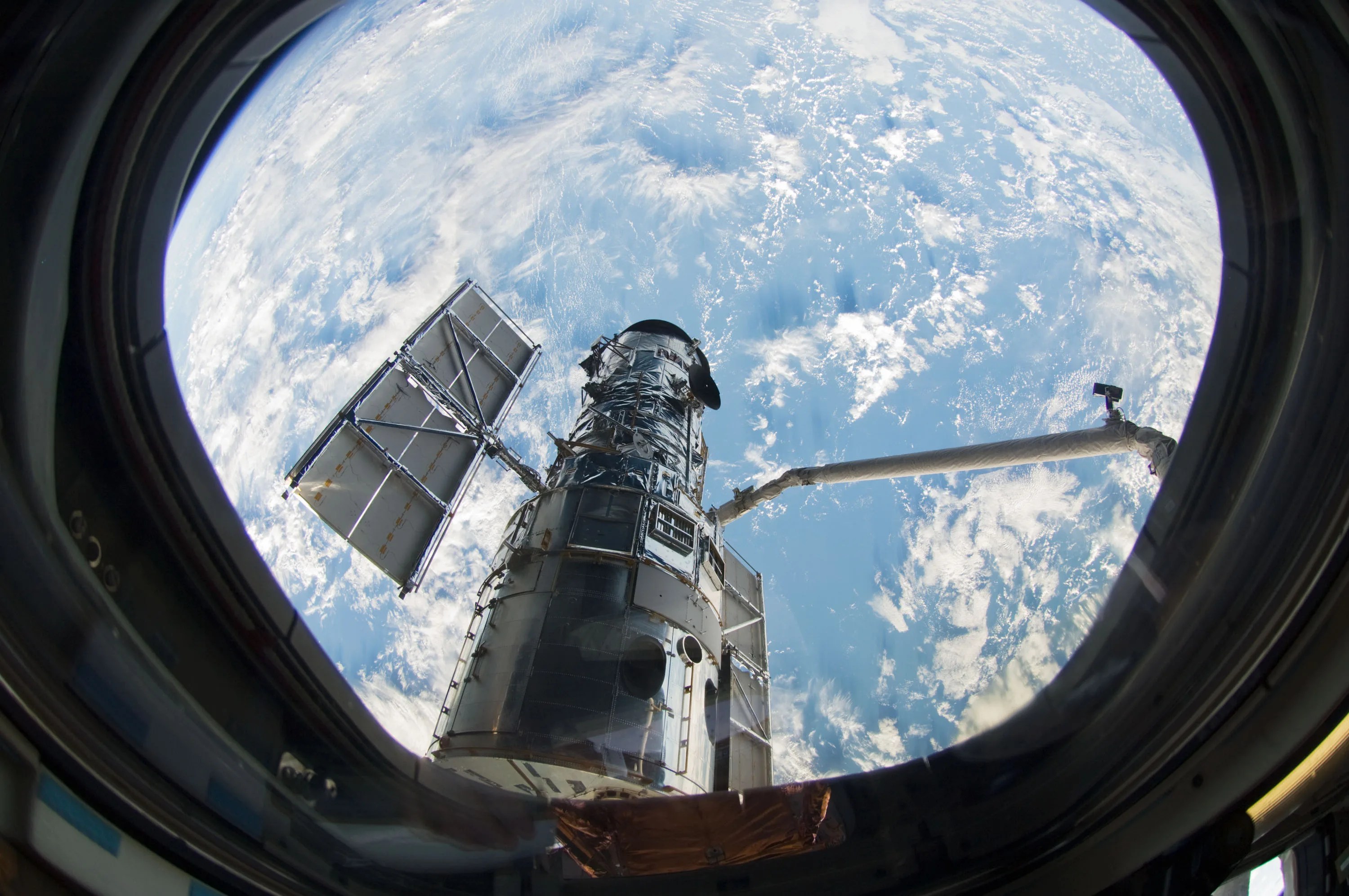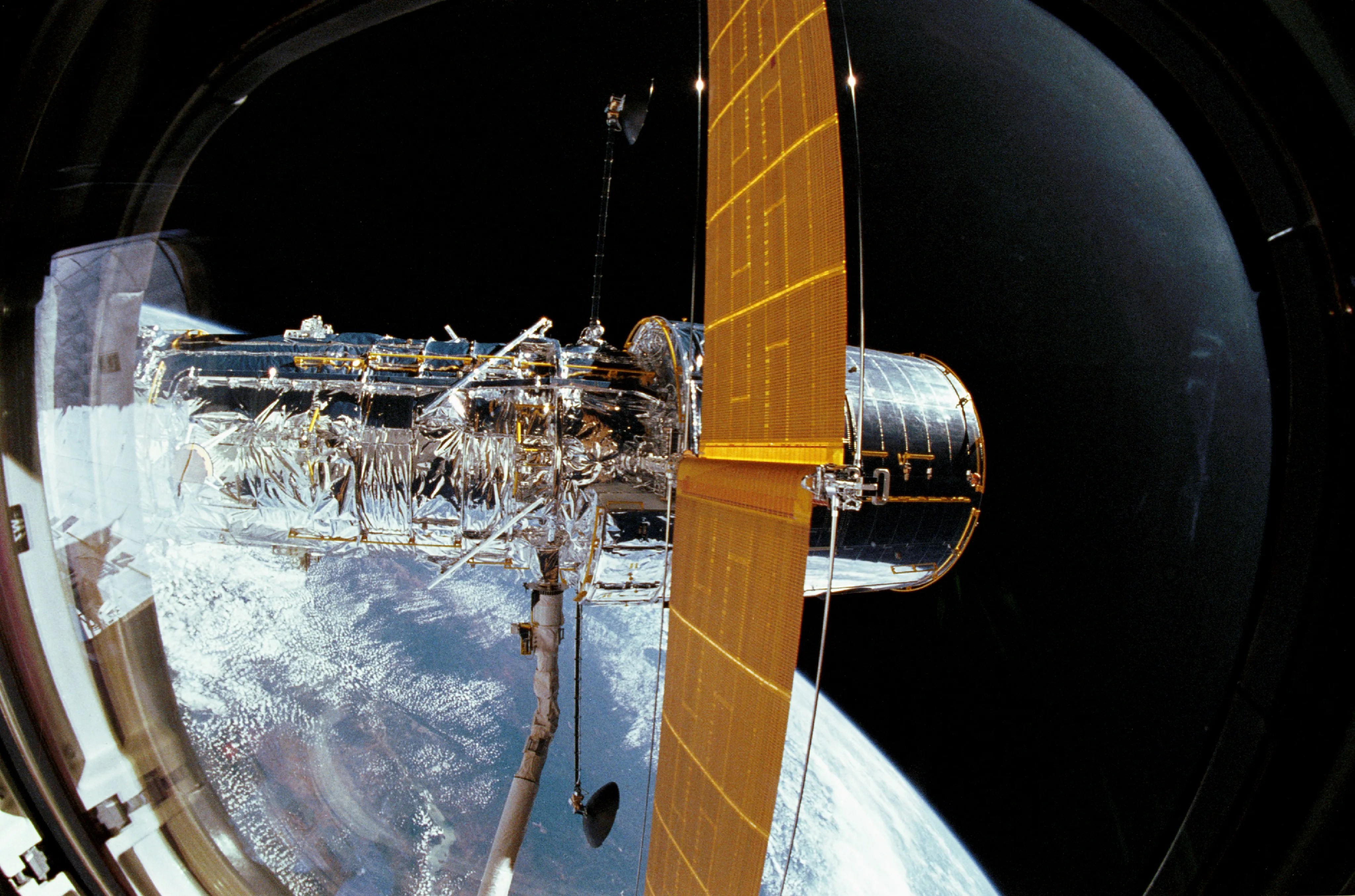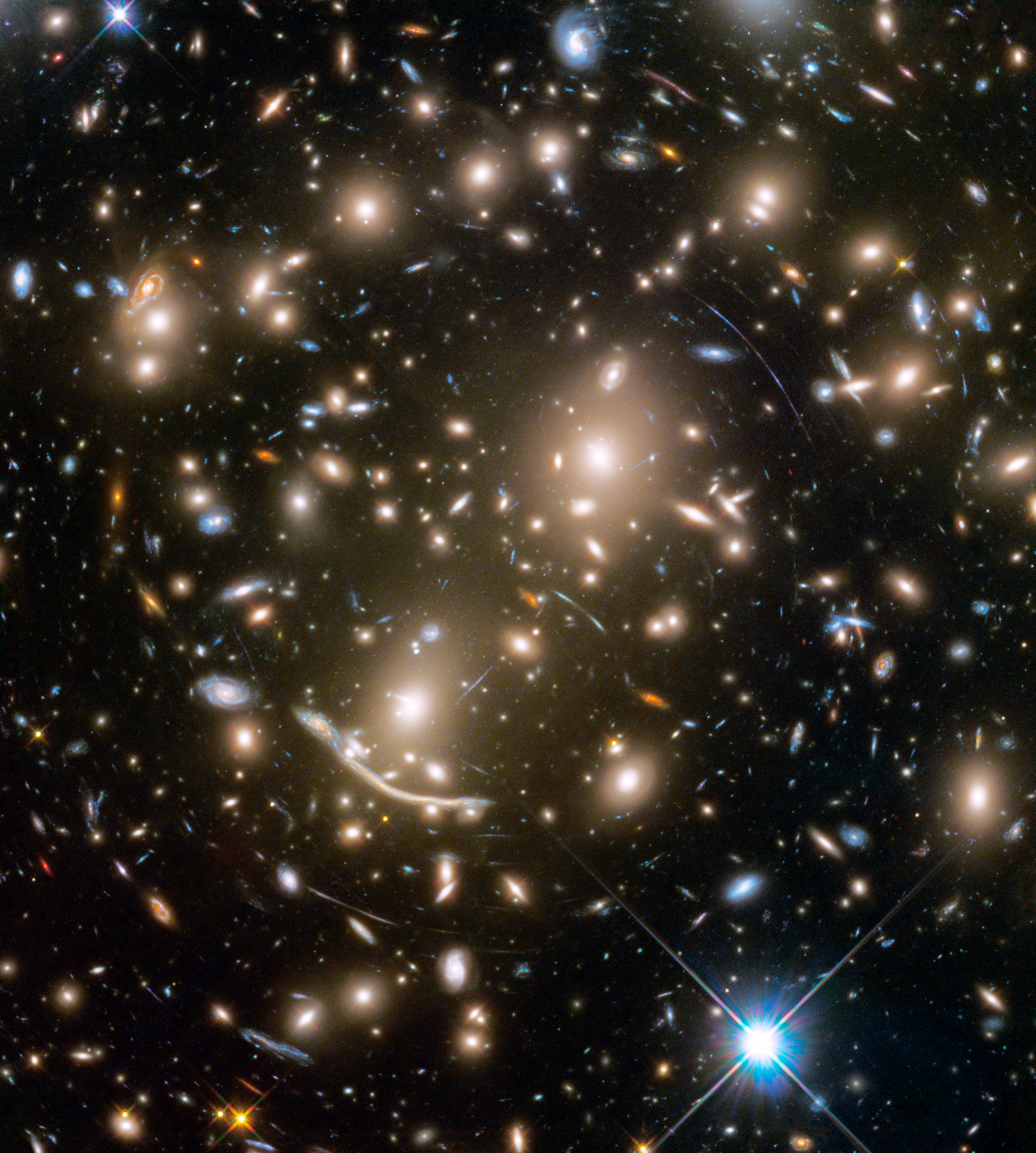Hubble Space Telescope - NASA Science (original) (raw)
A New View of the Universe
How did a telescope become a household name and change how we look at the cosmos forever?
With over 1.5 million observations and 20,000+ papers published on its discoveries, Hubble is the most productive science mission in the history of NASA. Yet the story of Hubble’s success starts before NASA even existed. It includes adversity, human ingenuity, heroic spacewalks, risk taking, and discovery. Learn the background of one NASA’s most famous missions.

Astronauts aboard Space Shuttle Atlantis snapped a still photo of the Hubble Space Telescope after it was grappled by the shuttle's Canadian-built Remote Manipulator System during Servicing Mission 4. The mission left the telescope at the peak of its scientific capabilities, allowing it to continue furthering our knowledge of the cosmos.
NASA
Science, Technology, Culture: Hubble's Growing Legacy
From cultural touchstone to technological influencer, Hubble has left its mark on Earth
Hubble science has rewritten astronomy textbooks as its discoveries continually provide deeper explanations of astronomical objects and unveil new phenomena. But science isn’t the only way Hubble has impacted our world. From image detectors that are now used in the fight against breast cancer to science images that are used in Hollywood blockbuster movies, Hubble is embedded in our everyday lives and pop culture.

Held by the space shuttle Discovery’s robotic arm, Hubble is unfurling its solar arrays as it hovers over Earth during its deployment in April 1990. The technology in Hubble and in its ground system has been used for numerous other benefits down here on Earth.
NASA
Discovering the Unimagined
Hubble has not only furthered our knowledge of the known universe, it's shocked the astronomical world with never-before-seen phenomena.
When Hubble was launched, no planets around other stars had been discovered, Pluto had only one known moon, and dark energy was not even a concept. With over three decades of observations, Hubble has changed humanity’s understanding of the universe. We now know that black holes exist at the center of almost all galaxies, Jupiter’s massive storm – the Great Red spot – is now shrinking, light can echo just like sound, and the universe is expanding at an accelerating rate. Learn about Hubble’s great discoveries, understand the basics behind Hubble’s scientific capabilities, and explore its incredible images of the cosmos.

Abell 370 is a massive galaxy cluster whose immense gravity distorts and magnifies the light of galaxies behind it. Hubble has used it to push its vision beyond its usual capabilities and see even farther galaxies. Such capabilities have allowed Hubble to change our understanding of all aspects of astronomy.
NASA, ESA, and J. Lotz and the HFF Team (STScI)
An Observatory for the Ages
Even after three decades in the harsh environment of space, Hubble is still at the peak of its scientific capability
Designed and built in the 1970’s and 1980’s, Hubble has far surpassed its 15-year life expectancy and produced science never thought possible at the time of its launch. Learn about Hubble’s unique design, the human spaceflight missions that have extended its life, and the ground operations that keep it as productive as ever.

This image of the Hubble Space Telescope was taken at the end of the final space shuttle servicing mission to the observatory in May 2009. Hubble's design for servicing, and the operations process on the ground, has allowed Hubble to continually amaze the world with incredible images and new scientific breakthroughs.
NASA